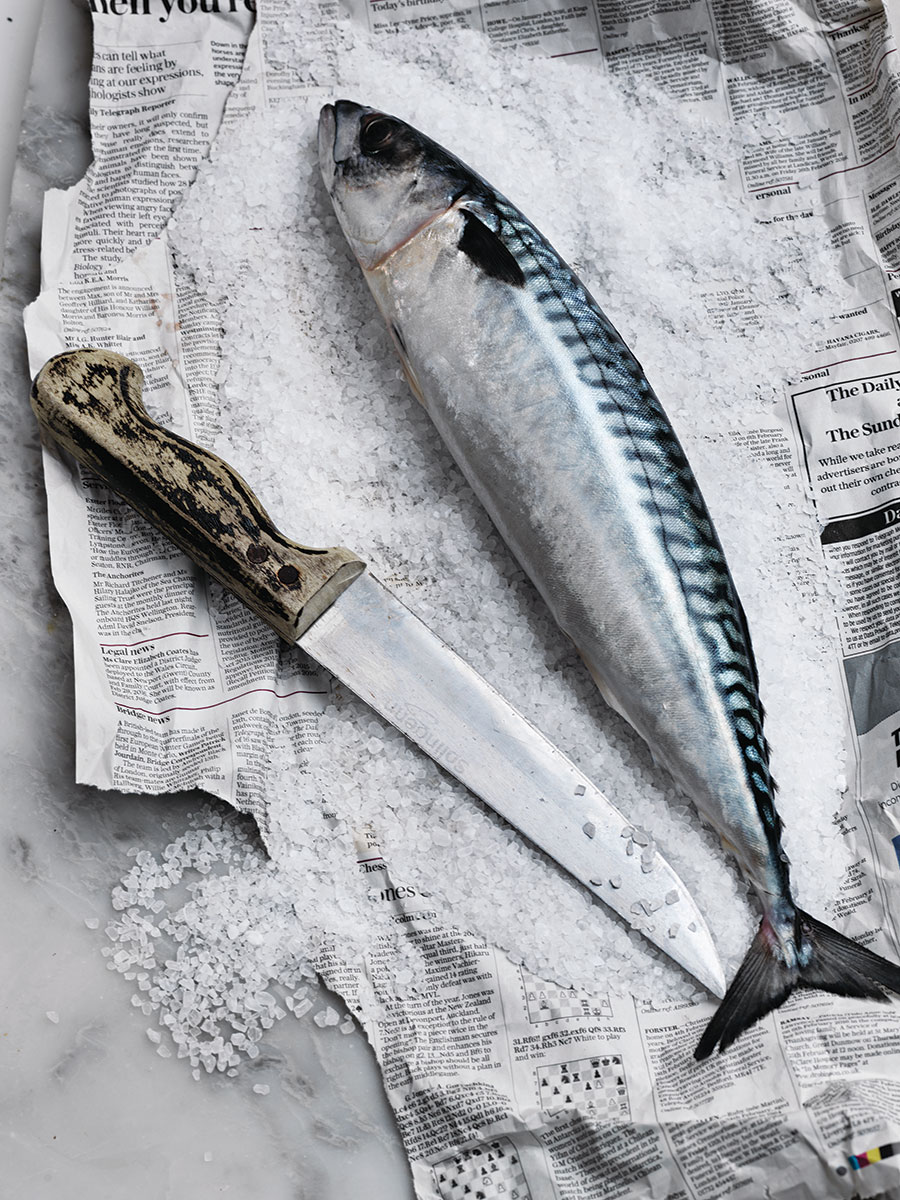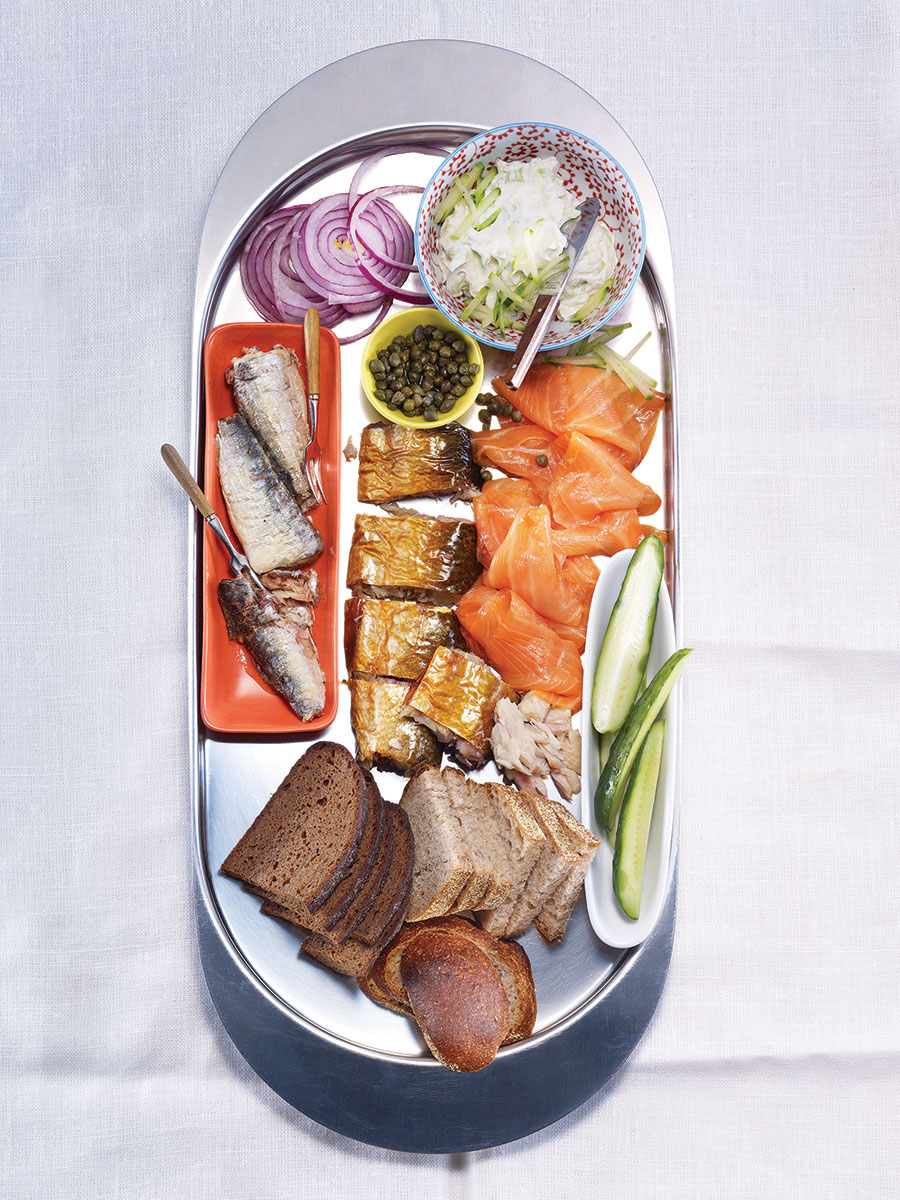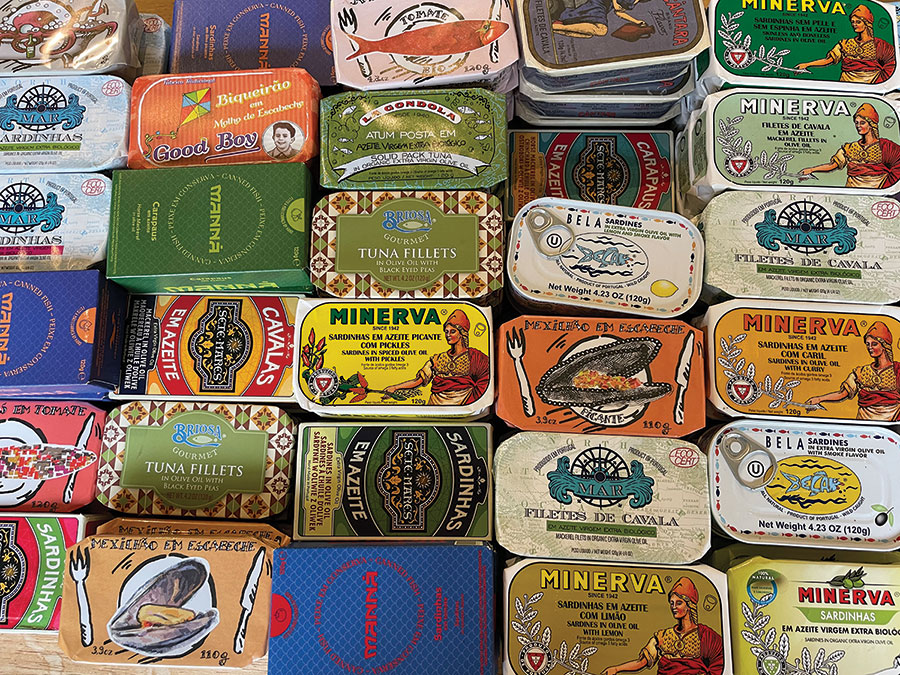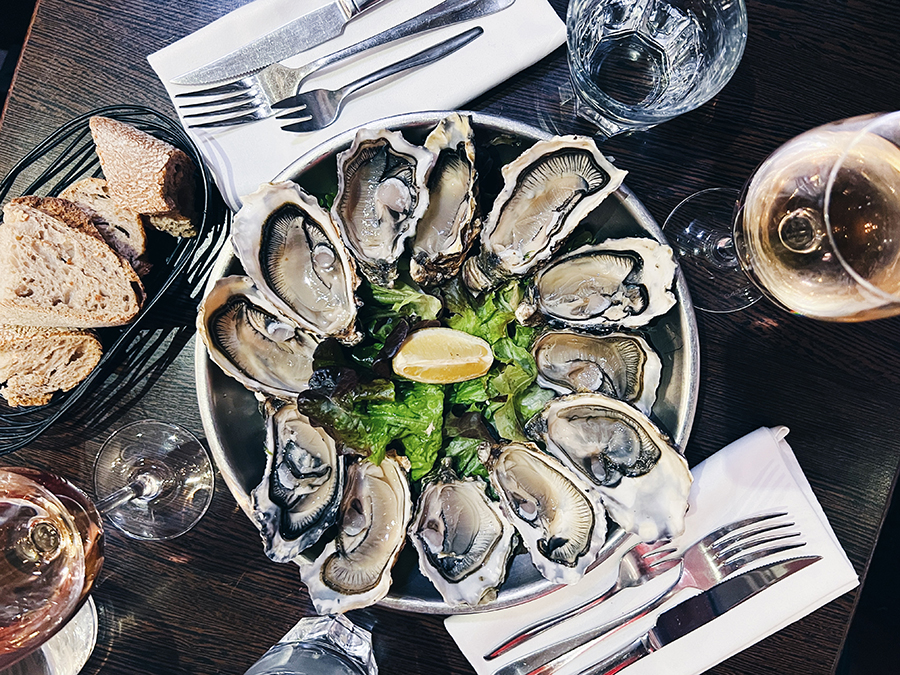Make a Splash! Tap Into the Ocean’s Bounty For a Delicious and Easy Holiday Feast

Ditch the turkey and the roast beef, because the ocean’s bounty provides all the wow factor you need for a holiday feast, in a fraction of the time. Photo: Nikolay Donetsk/Getty Images
Home cooks often avoid fish and seafood because they think the delicate flesh requires professional techniques. The truth is a whole salmon is faster and easier to cook than a roast turkey, a platter of oysters is far more luxe than smoked bivalves from a can and, even if you want to go the tinned route, high-end preserved delicacies like sardines, octopus and even lobster are replacing lowly mussels and tuna on seacuterie platters. Here’s our how-to guide for a holiday spread that will impress your guests.
The Main
Baking the catch of the day in a bed of good old sodium chloride seals in the moisture — and natural flavour. For this recipe from Charlotte Langley, founder of Scout, a P.E.I.-based sustainable seafood company, she recommends mild-flavoured fish like sea bass, branzino, grouper or sea bream (a.k.a. dorade or dorado), but Arctic char or salmon also works. A fresh fish will have bulging eyes (avoid sunken and cloudy), bright skin and should smell like the sea, not ammonia. Langley, a chef ambassador for the non-profit Marine Stewardship Council, recommends buying fish with the MSC blue label, which means it has been sustainably harvested.
Salt-Baked Fish

Prep 15 minutes // Cook 30 minutes
Serves 2 to 4 as a main course
Ingredients:
1 whole fish (about 1 kg), cleaned and gutted
6 ¼ cups (about 2 kg) kosher salt
3 egg whites
A few sprigs of fresh rosemary
1 lemon, sliced
2 cloves garlic, smashed
Tools:
Baking sheet
Parchment paper
Mixing bowl
Kitchen thermometer
Directions:
1. Preheat your oven to 425 F (220 C). Line a baking sheet with parchment paper.
2. In a large mixing bowl, combine the kosher salt and egg whites. Mix until it has a sand-like consistency.
3. Lay a 1/2-inch (1 1/2 cm) thick layer of the salt mixture on the parchment-lined baking sheet, roughly in the shape of the fish.
4. Stuff the cavity of the fish with lemon slices, rosemary
and garlic.
5. Place the fish on top of the salt layer on the baking sheet.
6. Completely cover the fish with the remaining salt mixture, patting it down to ensure it’s fully encased.
7. Bake for 25-30 minutes, or until a probe thermometer inserted into the thickest part of the fish reaches 145 F (63 C).
8. Remove from the oven and rest for 10 minutes.
9. Carefully crack open the salt crust with the back of a wooden or serving spoon and remove crust to reveal the fish.
Discard crust.
10. Scrape off the skin and use a fish spade or cake server to remove the top portions of the flesh. Peel off the spine and other bones to get to the bottom filets. Serve immediately.
The Appetizers
Seacuterie Boards

Forget the seafood tower or cured meats with cheese, seacuterie is the fish-forward hors d’oeuvres poised to overtake trendy charcuterie boards.
The epitome is in the southern town of El Puerto de Santa María in Spain, where chef Ángel León has been transforming fruits of the sea from the Andalusian region into ambrosial possibilities. Known as el Chef del Mar (Chef of the Sea), he honours the ocean at Aponiente, his restaurant with three Michelin stars, where he uses every part of the fish to create seacuterie like seafood-based bacon made from sea bream bellies, mortadella and chorizo from discarded fish parts, and a rich jamón del mar from almadraba tuna bellies.
In Canada, technological improvements have increased the variety of seafood on the market, which takes the stress off of the “North American Four”: salmon, tuna, cod, and shrimp, says Ned Bell, the founder of Chefs for Oceans who has been a sustainability champion for years as the chef ambassador for Ocean Wise, a Vancouver-based conservation organization. Now the spotlight can shine on filter-feeding bivalves (mussels, clams and oysters) and small fry (herrings, anchovies and sardines), which are all worthy of any seacuterie board, whether simply cooked, canned, smoked, perserved
or cured.
Canned Canapés

Tinned seafood has always been a pantry staple, but the days of smoked oysters on Ritz crackers are long gone. Enter conservas, a delicacy from Spain’s Iberian peninsula that started showing up on pre-pandemic menus at Bar Raval in Toronto and Como Taperia in Vancouver. Conservas include everything from octopus, sardines and premium tuna to scallops, cockles and even sea urchin. A few tins can be made into a casual meal, especially when served with fresh bread or plain potato chips, and paired with wine or vermut (Spanish vermouth), an excellent aperitif that complements the herbs, sauces and marinades used in conservas.
Up your appetizer game with these elegant alternatives to chicken of the sea:
Scout Atlantic Canadian Lobster: Langley’s craft cannery packs 3 ounces of claw and tail meat from wild-caught P.E.I. lobsters into each tin, preserved with butter, cold-pressed sunflower oil and salt. Find it at enjoyscout.com.
Ar de Arte Small Scallops in Olive Oil, with Garlic and Chilli: Each luxurious can is hand-packed with the best scallops from the Cambados fish market in Galicia, Spain, with chili, slices of garlic and finished with olive oil. Find it at spanishpig.ca.
Cantabrian Anchovies: Perfect for pintxos Gilda (pepper, olive and anchovy skewers), these high-quality, hand-sliced anchovy fillets follow traditional canning techniques practised for more than a century in Santoña, and include the name of the person who packed the tin on the inside label. Find it at spanishpig.ca.
Güeyu Mar Chargrilled Octopus: Carefully selected octopus from the Cantabria region in northern Spain are cut into large pieces, braised until tender and preserved in extra virgin Arbequina olive oil. Find it
at caviar.ca
Oyster Platter

Oysters are alive until they are shucked, so you want the freshest bivalves you can find; try an oyster bar, fishmonger, specialty shop or, if you’re lucky enough to live on the East or West coasts, an oyster farm.
Toronto expert Chris Manocchio of Rodney’s Oyster House recommends two or three varities for a platter, and serving them on crushed ice, small, clean rocks that have been chilled in the freezer or a bed of cold salt.
Like wines, oysters have subtle taste differences depending on the species and where they are grown (most are farmed now). Atlantic oysters are sweet, with a salty start and plump meat. P.E.I. is famous for its briny, crisp Malpeques, but Manocchio prefers mollusks from Fortune Bay and Cascumpec Bay. Although they’re harder to find, he suggests Lameques from New Brunswick and Macintoshes from Nova Scotia.
Pacific Ocean specimens are richer, creamier and have a sweet, cucumber-fresh flavour. Manocchio recommends SunSeekers from Baynes Sound in B.C., which is also where they grow Kusshis, known for their slightly fruity finish.
“One of my favourite parts about working with oysters is my clear conscience when thinking about sustainability,” says Manocchio. “Oysters are not only one of the least damaging grown and harvested crops, but they are also beneficial to have around. Oysters are filter feeders that clean the water they grow in. They provide habitable environments for other creatures. In short, try an oyster. You’re doing yourself, and the world, a favour.”
How to Shuck an Oyster

Chris Manocchio, who was crowned the oyster-shucking champion at the Tofino Oyster Festival and the Canadian Oyster Shucking Championship in P.E.I. last year, says the trick to opening an oyster is to separate the lid (top) of the shell from the adductor muscle, and then cleanly scrape the meat from the cup (bottom). Shucking champions are judged on speed (he can open 18 in a minute) and whether they can do the job without mangling the meat, breaking the shell or presenting the oyster with grit or mud. Here’s how it’s done:
1. Lay a rag flat on the surface you are working on. Make sure it’s long enough to fold over your hand as a guard.
2. Place the oyster, cup side down, on the rag and secure it with your non-dominant hand.
3. With the hinge (pointed end) of the oyster facing toward your knife hand, insert the knife’s tip in the little gap in the hinge, feeling around that point for where the knife sits a little better than everywhere else.
4. Shimmy the knife in far enough to pop open the hinge by rotating it back and forth while adding some pressure from your shoulder. You will feel a release of tension.
5. Use the knife to pry the top shell upward to create a gap between the oyster and the top shell.
6. Hang on to the top shell with your fingers and run the knife closely across the inside surface to scrape the adductor muscle away from the top shell. Remove the lid.
7. Turn the oyster, so the hinge end faces your non-dominant hand. Using a knife, approach the bottom part of the adductor with a firm scrape. And voila! You have a nice-looking oyster sitting loosely in its cup.
A version of this article appeared in the Dec 2023/Jan 2024 issue with the headline ‘Make a Splash,’ p. 102.
RELATED: